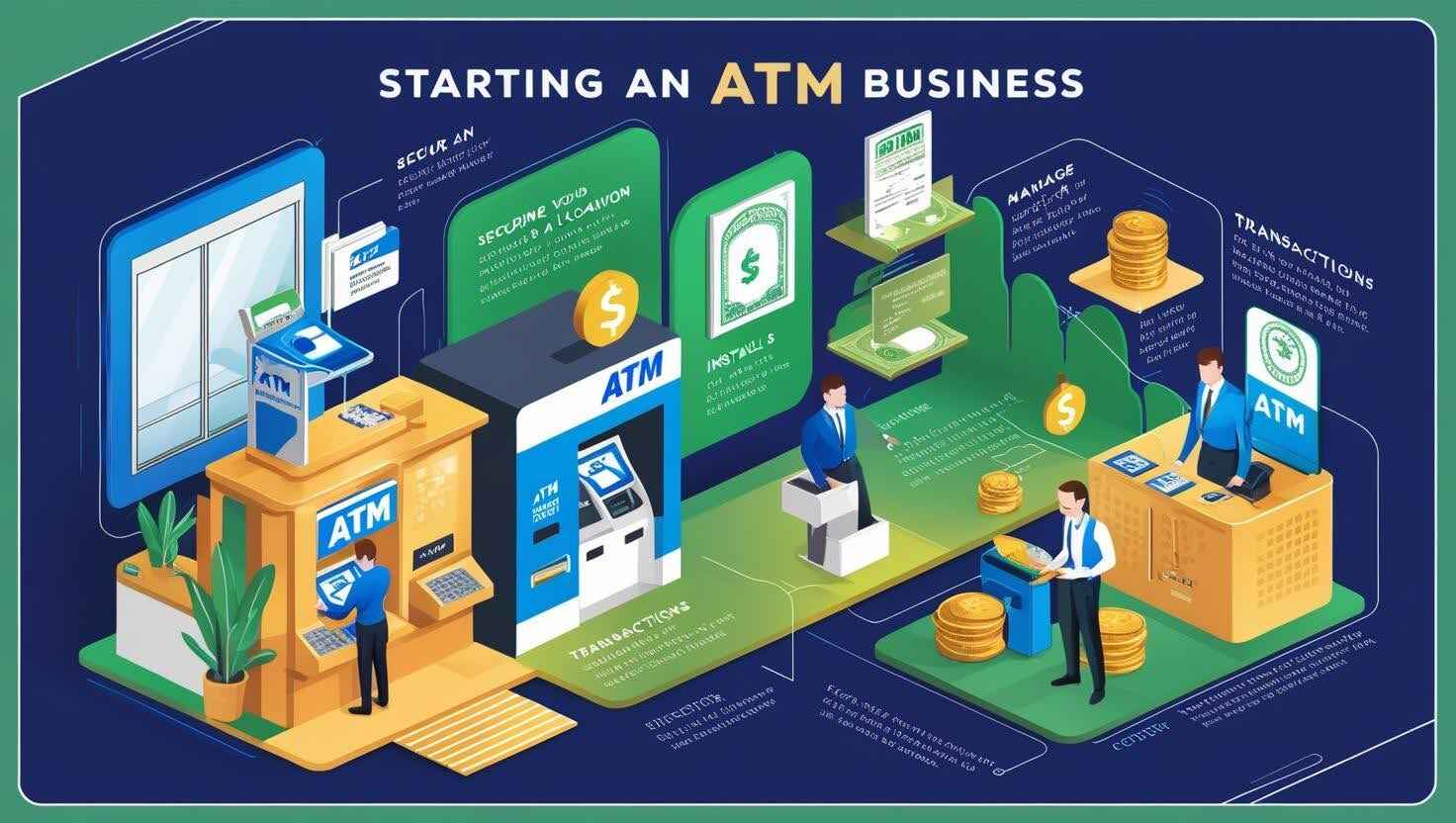Starting an ATM business is no different from other entrepreneurial ventures, but it does require understanding the nuances of machine ownership, legal requirements, and identifying prime locations for installation. Here’s a step-by-step guide to get your ATM business off the ground:
1. Research and Understand the Market
Before diving into purchasing ATMs and securing locations, it’s essential to understand the market and your target areas. Research various neighborhoods, commercial districts, and busy streets to identify where the highest demand for cash withdrawals is.
Key considerations include:
- Foot Traffic: High-traffic areas such as shopping malls, busy street corners, near transportation hubs, and popular tourist destinations are ideal locations for ATM installations.
- Local Regulations: Some states and municipalities may have specific rules regarding ATM placements, transaction fees, or insurance requirements. Be sure to research local laws before you begin.
- Competitor Analysis: Identify other ATMs in your area and assess how you can offer something better—whether through location, customer service, or competitive transaction fees.
2. Select the Right ATM Model
Choosing the right ATM machine is crucial for maximizing profitability and reducing maintenance costs. ATM machines come in different models, ranging from basic cash dispensers to advanced machines offering various services such as bill payments or card-less transactions.
Considerations when selecting an ATM model:
- Functionality: Do you want a basic cash dispenser, or are you looking for one that offers other services like bill payment, money transfers, or even ticketing services? Consider your location and customer needs.
- Security Features: Ensure the ATM machine is equipped with the latest security technology, such as surveillance cameras, anti-skimming devices, and fraud prevention measures.
- Size and Type: Depending on the space you have available and the volume of transactions expected, choose between freestanding or wall-mounted models.
Key Takeaways:
- Research the local market, identify high-traffic areas, and check local regulations.
- Choose an ATM machine based on functionality, security features, and space requirements.
3. Obtain Funding and Secure Your ATM Machines

The next step is securing funding to purchase your ATMs. ATM machines can be costly, with prices ranging from $2,000 to $8,000 each. You will also need working capital to keep cash flowing to the machine, as well as funds for installation, network fees, and maintenance.
Funding options include:
- Self-Funding: If you have the capital, this is the easiest way to get started.
- Business Loans: Some financial institutions offer loans specifically for small business owners looking to start ATM businesses.
- Leasing: If purchasing ATMs outright is too expensive, consider leasing machines from an ATM provider.
Once you’ve secured your funding, make sure to get your machines installed in prime locations. You may need to coordinate with the property owner or management, ensure the space meets your needs, and handle the installation process.
Key Takeaways:
- Secure funding via personal savings, business loans, or ATM leasing.
- Work with property owners to find suitable locations for your ATMs.
Maximizing Profits from Your ATM Business

Once you have your ATM machines installed, it’s time to focus on making your business profitable. This requires optimizing cash flow, ensuring high usage, and exploring ways to increase revenue beyond just transaction fees.
1. Optimize Cash Flow and Service Frequency
Ensuring your ATMs are stocked with cash at all times is critical for generating revenue. Cash replenishment is a vital part of your ongoing operations, and it requires a well-organized system to track withdrawals and monitor cash levels.
You can manage cash flow by:
- Monitoring Transaction Volumes: Use remote ATM management systems to monitor how much cash is being withdrawn and anticipate when a refill is necessary.
- Hiring a Service Provider: For large-scale operations, it may be more efficient to hire a professional service to manage cash replenishment and repairs.
- Automating Alerts: Set up automatic alerts for when cash levels are low, so you can act quickly to refill the machine.
2. Maintain Your Machines
Regular maintenance is crucial for keeping your ATM machines running smoothly and minimizing downtime. This includes routine servicing, ensuring that machines are clean and working properly, and keeping up with necessary software updates.
To reduce repair costs:
- Use ATM Monitoring Software: Most modern ATMs come with monitoring systems that track machine performance in real-time, helping you catch problems before they escalate.
- Establish Relationships with Service Technicians: Build a reliable network of maintenance professionals who can quickly respond when issues arise.
3. Increase Transaction Volume
Maximizing ATM usage is the key to boosting your profits. To attract more users to your machines, consider:
- Promotions: Offering promotions such as fee-free transactions for a limited time to encourage users to try your ATM.
- High-Traffic Areas: Position your ATMs in locations with high foot traffic and minimal competition to ensure maximum visibility and usage.
Key Takeaways:
- Monitor cash flow closely and ensure timely replenishment.
- Perform regular maintenance and build relationships with service providers.
- Consider strategic promotions to drive usage and revenue.
Conclusion: Turning Your ATM Business into a Profitable Venture
Starting an ATM business can be a highly rewarding venture if you approach it with the right mindset and strategy. By understanding the business model, selecting the right locations, securing funding, and maintaining your machines, you can create a steady stream of income from ATM transaction fees.
Key Takeaways:
- Understand the market, secure funding, and choose optimal locations.
- Ensure your ATMs are consistently stocked with cash and well-maintained.
- Focus on increasing ATM usage through promotions and high-traffic locations.
FAQs
- How much money can I make from an ATM business?
- Profit depends on the transaction volume, location, and fees. On average, ATM owners can make between $300 to $1,000 per month per machine.
- Do I need to own the property to place an ATM?
- No, you can place ATMs on properties you don’t own, but you must negotiate a revenue-sharing agreement with the property owner.
- Are there risks involved in owning an ATM business?
- Yes, risks include maintenance costs, theft or vandalism, and low transaction volumes.
- How long does it take to see a return on investment?
- It typically takes 6 to 12 months to see a return on investment, depending on location, transaction volume, and the initial investment made.
- Do I need special licenses to own an ATM business?
- Depending on your location, you may need to acquire an operating license or register your business with local authorities.

